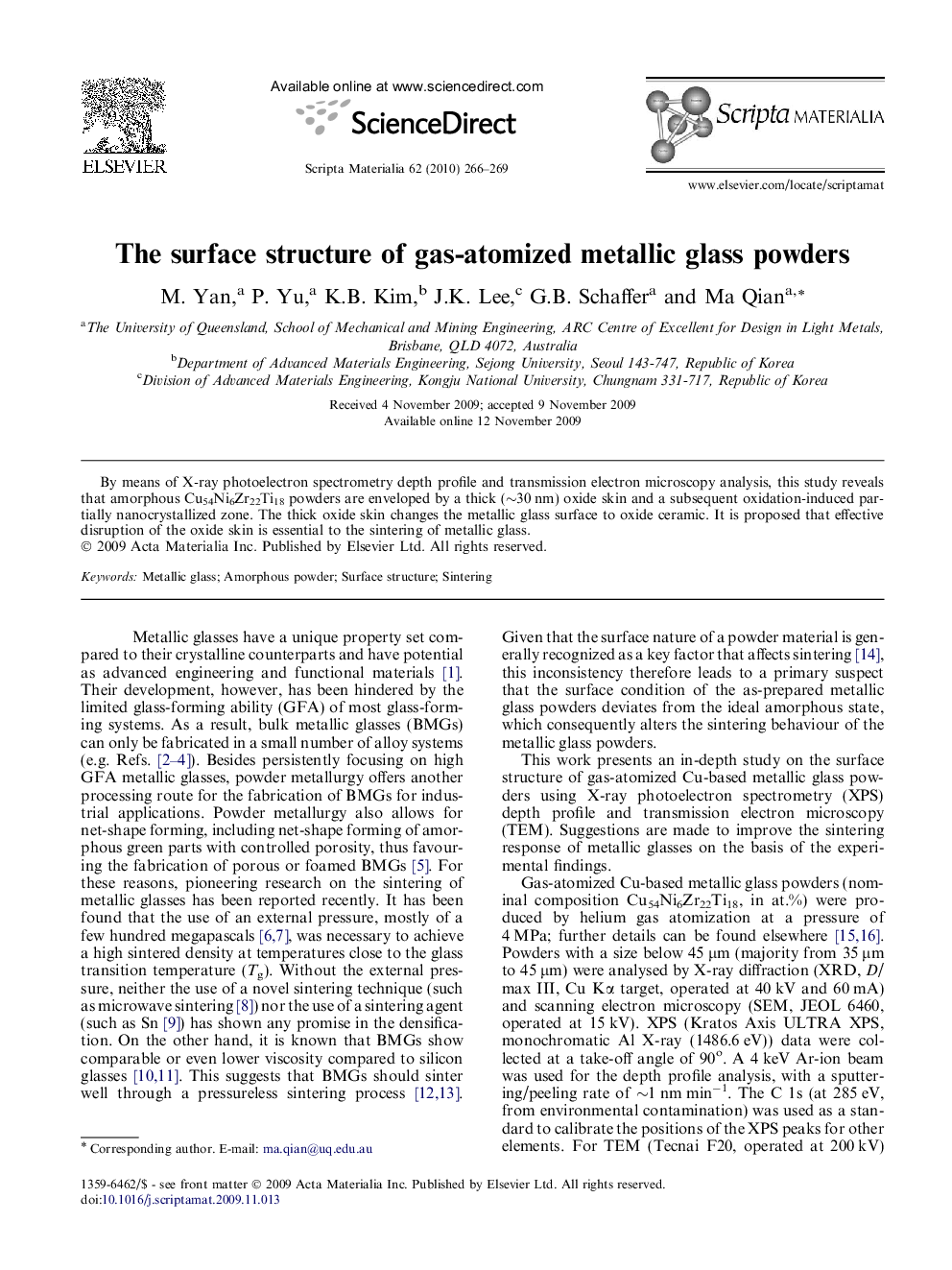| Article ID | Journal | Published Year | Pages | File Type |
|---|---|---|---|---|
| 1500866 | Scripta Materialia | 2010 | 4 Pages |
Abstract
By means of X-ray photoelectron spectrometry depth profile and transmission electron microscopy analysis, this study reveals that amorphous Cu54Ni6Zr22Ti18 powders are enveloped by a thick (∼30 nm) oxide skin and a subsequent oxidation-induced partially nanocrystallized zone. The thick oxide skin changes the metallic glass surface to oxide ceramic. It is proposed that effective disruption of the oxide skin is essential to the sintering of metallic glass.
Related Topics
Physical Sciences and Engineering
Materials Science
Ceramics and Composites
Authors
M. Yan, P. Yu, K.B. Kim, J.K. Lee, G.B. Schaffer, Ma Qian,
